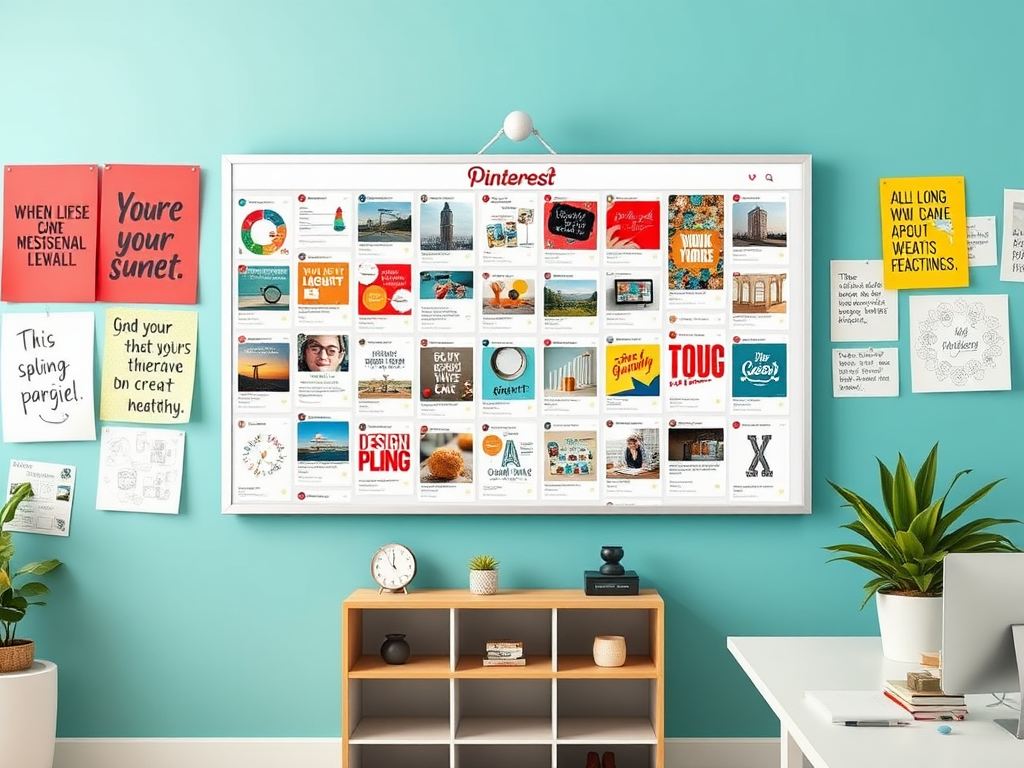Welcome to the world of Pinterest marketing, where creativity meets strategy in a visual feast of inspiration! This platform offers a unique blend of a social network and search engine, making it an invaluable tool for marketers and entrepreneurs. Whether you’re a small business owner looking to promote your latest products or a creative artist seeking exposure for your work, Pinterest has something to offer you. Understanding the nuances of Pinterest can unlock new avenues for traffic, engagement, and sales. In a landscape saturated with online marketing platforms, Pinterest stands out by fostering a community that leans heavily on imagery and aesthetics. Let’s dive deep into how you can harness this powerful platform to drive your goals forward.
Many people underestimate the power of Pinterest in their marketing strategies, yet its potential is vast. Imagine each pin representing a gateway to your website, driving traffic that converts into loyal customers. The beauty of Pinterest lies in its discovery-driven model, where users are actively searching for inspiration and solutions. This means that content shared on Pinterest has a longer shelf life compared to posts on traditional social media platforms. It’s crucial to recognize that Pinterest users often come with high intent, seeking not just ideas but also actionable content that can improve their lives. Hence, mastering Pinterest marketing can significantly elevate your brand’s online presence.
Why Use Pinterest for Marketing?

Utilizing Pinterest for your marketing strategy is about more than just sharing gorgeous images; it’s about connecting with a specific audience that values inspiration. With its predominantly female user base, Pinterest caters to an audience that is often described as enthusiastic about exploring new ideas, products, and services. As you tailor your content to engage with this demographic, consider the following advantages:
- High User Engagement: Users often save, share, and respond to content, helping increase your reach.
- Prominent Purchase Intent: Many Pinterest users browse with the intention of buying, making it a prime platform for conversion.
- Evergreen Content: Pins can continue to attract attention long after they are posted, providing lasting value to your marketing efforts.
Moreover, more men are joining Pinterest, widening the audience and allowing for diversified marketing approaches. Businesses that understand the platform’s potential can craft their offerings to appeal to this expanding user base. By aligning your Pinterest strategy with your business goals, you can ensure that you effectively engage your target audience.
Setting Up Your Pinterest Business Account

Starting your Pinterest journey requires the creation of a Business account, which unlocks essential tools for analytics and ad placements. Here’s how to establish your presence effectively:
- Visit Pinterest Business: Navigate to the Pinterest for Business page to get started.
- Complete Your Profile: Fill in all necessary details, ensuring your business name and website URL are accurate.
- Claim Your Website: This step is vital as it connects your website with your profile, allowing access to analytics.
- Set Up Rich Pins: Rich pins provide additional context about your products by including real-time information from your website.
| Pin Type | Description | Ideal Usage |
|---|---|---|
| Standard Pins | Images or videos that link to a website. | General content sharing, driving traffic. |
| Rich Pins | Pins with extra information pulled from your website. | Product, recipe, or article promotion. |
| Video Pins | Short clips that engage users through motion. | Showcase products, tutorials, or tips. |
Creating Engaging Content
Once your account is set up, the next vital step is producing content that resonates with your audience. Remember that Pinterest thrives on high-quality visuals; thus, the aesthetic of your pins can significantly impact engagement. When developing your content, focus on creating:
- High-Quality Images: Use bright, clear images that effectively represent your brand and message.
- Vertical Pins: Opt for tall images as they tend to perform better due to their visibility in feeds.
- Keyword-Rich Descriptions: Optimize your pin descriptions with relevant keywords to improve discoverability.
Moreover, you can elevate the impact of your pins through specific techniques. For instance, incorporating a text overlay on your visuals can help clarify the purpose of the pin directly. Including elements such as your brand’s logo ensures that your images are recognizable at a glance. Moreover, motivated Pinners will appreciate a clear call-to-action prompting them to save the pin or visit your website for further information.
Building Your Pinterest Strategy
Implementing a solid Pinterest strategy goes beyond just posting beautiful images. Define your marketing goals clearly—whether it’s driving traffic, increasing leads, or building brand awareness, proper planning is essential. Creating a strategy tailored to your objectives involves:
- Defining Your Goals: Clarify what success looks like for you on Pinterest.
- Identifying Your Target Audience: Research demographics to tailor your content appropriately.
- Analyzing Competitors: Observe what top-performing accounts are doing and adapt to enhance your identity.
By establishing a focused Pinterest strategy, you can create a sustainable and effective presence. Moreover, consider regular assessments to understand what works and what doesn’t, allowing for strategic pivots as needed.
Using Pinterest Analytics
Finally, leverage Pinterest’s analytics tools to gain insights into your performance. Understanding user behavior is vital to fine-tune your content strategy. Key metrics to monitor include:
- Impressions: The total number of times your pins are viewed.
- Engagement Rate: The percentage of viewers who interact with your pins.
- Top Performing Pins: Identify which pins drive the most traffic and replicate their success.
Conclusion
Starting with Pinterest marketing doesn’t have to be a daunting task. By defining your goals, understanding your audience, and consistently producing high-quality content, you pave the way for a successful Pinterest strategy. With patience and creativity, you can transform your Pinterest presence into a powerful marketing tool that not only drives traffic but builds a community of engaged users around your brand. Engage, experiment, and evolve as you navigate through this visually-driven platform, ensuring that your pins don’t just blend in but stand out.
Frequently Asked Questions
- How long does it take to see results from Pinterest marketing? Results can vary, but many businesses start seeing traffic within a few months of consistent posting.
- What types of content perform best on Pinterest? Visual content that is helpful, instructional, or inspirational tends to perform well, such as infographics, tutorials, and product showcases.
- Is Pinterest only for women? While Pinterest has a larger female user base, an increasing number of males are using the platform, making it suitable for a wide audience.
- How often should I pin? Consistency is key; aim to pin multiple times a day for optimal engagement.
- Can I use Pinterest for B2B marketing? Yes, Pinterest can be effective for B2B marketing by sharing infographics, case studies, and industry insights.
